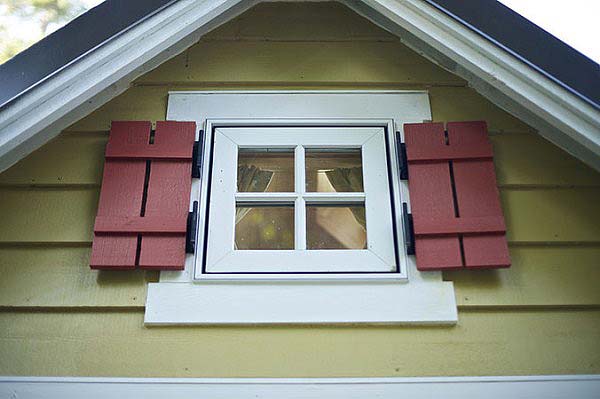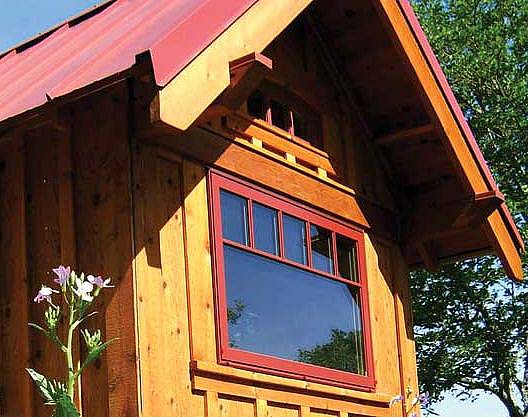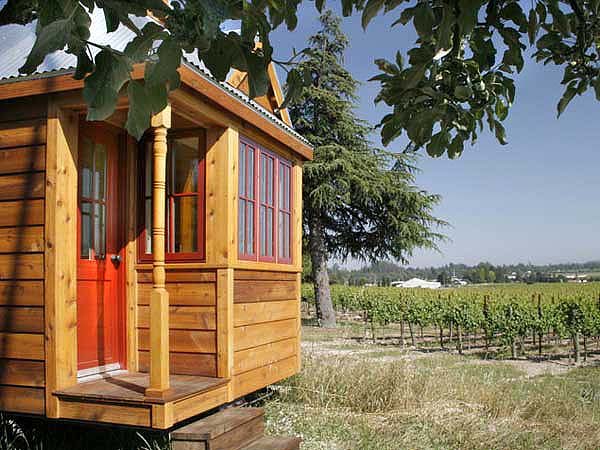by John Tenuto
Tiny homes are already much more environmentally friendly than the common McMansions sprawling across America, but everything can always get more efficient in an age when human motives are being questioned and energy-yielding natural resources continue to dwindle. Any progress is positive.
The tiny home movement is significant, as the direct sidestepping of traditional American real estate beliefs challenged societal norms where housing is considered. People are starting to realize that bigger isn’t always better, especially at home. Those in this movement are always making progress, and today I want to add one more thing for them to focus on: windows.
Just as they are within traditional properties, windows are a critical component when the entire efficiency of the tiny home dwelling is considered. Windows need to be positioned, designed and utilized in the correct way for energy performance to reach its potential. If you have a tiny home or are just curious about this form of real estate, these are some quick ways to mold the windows around green thinking:
1. Install and utilize curtains or blinds
While most people already have them, some don’t. One way to make sure the window areas of your tiny home aren’t taking away from your energy efficiency is to utilize blinds or curtains. This can make a legitimate difference in the way your tiny home loses or gains heat. Over time, this could end up saving you some serious money on any energy costs you have and also reduces the strain on the environment. Plus, blinds can add character without taking up
space (space is hard to come by!).

2. Apply fresh caulking around your windows
Windows are often sealed with caulking, and like most other substances, it wears down and dissipates as a working material over time. If you’re a tiny home owner, consider applying fresh caulking as frequently as every 4-6 months. Any deficiency in insulation involving one of your very few windows can be really noticeable in such a small place. This is increasingly important to make a note of if you live in a location with extreme seasons. You don’t have to be professional and it shouldn’t take long to reapply caulking before and after the four major seasons.
3. Replace weather stripping
Whether stripping is a common component of home windows. One way to directly increase the efficiency of climate control in your tiny home is to replace the weather stripping. For one, it’s easy to do. Secondly, it will be affordable because you won’t have many windows to update. Regardless of how you produce and store energy within your tiny home, doing this can help your efforts.
4. Install window films
Not only do window films protect furniture and enhance privacy, but they also fall within the environmentally friendly argument. Window films can slow down the transfer of energy from inside to outside and vice versa, thus naturally decreasing the strain on your climate control system. Whether it’s a wood fire or a minimized custom HVAC in your tiny home, its efforts will be aided with the addition of these films.
5. Use windows effectively
There’s only so much you can do to make your windows more efficient, especially if you don’t use them properly. For one, only open them when you see the decision aiding your comfort or energy efficiency in a meaningful way. If you need a breath of fresh air, so be it, but do your best to try and avoid situations like leaving them open when you head to work. This type of action can quickly become detrimental to your energy use.

Tiny homes are very sustainable relative to the other real estate options within our society. However, everything can get better. While there are plenty of ways to make progress within your tiny home, designing and utilizing you windows effectively is a nice place to start.
John Tenuto writes about sustainable home building and design.

Don’t forget proper window placement. You can really enhance cross drafts and the thermal effect which can help good ventilation when needed. Especially appreciated when you burn toast or cook something you’d rather not smell for days, even if you do have an exhaust fan. Anybody that heats with wood knows there are times you might need to clear air out quickly. Also good for cooling a place down in the summer.
Have to add a ‘qualifier’ to #5: leaving my windows open while I’m gone is a GOOD idea, it means I don’t have to turn on a fan when I come home to a sweltering little house. Cross breezes are free, and the natural sound is so much more pleasant than a noisy electric gadget.
It depends on the climate and time of year though doesn’t it.
I’m curious where one finds windows and doors like I see in the pictures of the tiny homes. These windows don’t look like anything out there being built by replacement window companies. They probably are not standard sizes, either. Obviously, they must be custom made?
Something that wasn’t touched on in this article and it really only applies to those of you building your own tiny houses is to look at the U-factor and Solar Heat Gain Coefficient (SHGC) of the windows you are buying. The climate you are going to live in really determines what those values should be. The lower the U-factor the better insulated the window will be. SHGC applies to how much heat can get into your space via radiation from the sun. In a passive solar house these values are very important to over all heat and cooling load calculations.
Lastly, the suggestion of re-caulking your windows between seasons I don’t really agree with. If the caulking is failing that quickly you have bigger issues and its not the caulks fault (when I read that sentence over again its sounds pretty funny, but I am an immature 31 yr old male). Caulking should not fail in 6 months and just re- caulking the joint may be holding moisture where moisture shouldn’t be. A properly flashed window should have multiple ways to shed water and or allow water to escape. Follow the window manufacturers guidelines and it will be fine.
That just my two cents as a builder and energy efficiency nerd in the Pacific NW.
Caulk wears away and dissipates into thin air! whooosh!
More needs to be said about natural lighting and ventilation vis-a-vis sizing windows to overall square footage, proximity to walls, cross-ventilation and glare prevention, orientation for heating/cooling versus prevailing sunlight and wind directions, sizing and locating incoming ventilation in relation to exhaust ventilation for passive cooling, etc., etc., etc….
Carol, it looks like most of the windows pictured are re-used windows, often available at Habitat ReStore and similar second-hand building material stores. Sometimes you can find used windows on craigslist or at your local window seller.
If energy efficiency is your goal however, you will likely want to use newer windows that have double glazing at a minimum. These kinds of windows are also available at ReStore type places, and will often be made of vinyl or aluminum frames which won’t have lead paint or other issues.
While natural lighting, view, and ventilation cannot be stressed enough,, they also must be balanced with useable wallspace in a tiny home.. no matter how beautiful a place is, you need to maximize wall useability too. I’m surprised I don’t see more shutters on tiny homes, it seems to me that the practicality and beauty of real useable shutters go hand in hand with tiny houses.
Fresh caulking every 4-6 months? That’s nonsense. A good quality caulking will last many, many years before needing touching up or replacing. Check it every year but should go 5-10 years before needing replacement, if not longer.
If you want efficiency, avoid solid aluminum frames. Aluminum is a VERY good conductor of heat (and cold).
Instead of window film, you can put bubble wrap on the inside of windows. Just size the bubble wrap to the portion of the window you want covered. Spray the flattest side with water and then place the bubble wrap on the inside of the window. I’ve had some up for over a year and it hasn’t come off
yet.
The advantage is that it is reusable. You can remove it for the summer and reapply in the winter.
Must kinda spoil the view though. ;-]
When I lived in old shacks north of 60 we used to use thick plastic to make storm windows for the winter. You’d put it on the outside of the window and heavy frost would build up in there but it sure cut the drafts. It was totally amazing when the thinner plastic stuff came along that you installed inside and used a hair dryer to shrink to fit (no good when you didn’t have electricity!) Everyone was thrilled to be warm and still able to see outside. Also made cleaning windows in spring a lot easier. Unfortunately it wasn’t reusable. I think the bubble wrap would drive me nuts, just like the old frosted over plastic did.
Shutters or roll-down exterior bamboo shades are great in the summer for cutting down on heat from the sun. And they are better than curtains because they reflect the heat outside before it has a chance to get in through the window. They are also better than heat-reflecting glass on windows facing the sun because you want that heat to come in during the winter.
If you live in a climate with hot days and cool nights in the summer you can make a big difference by leaving windows open at night to cool down the house, then closing them as soon as it gets hot outside. An indoor-outdoor thermometer helps perfect this system. Just watch for that transition time when one temperature is crossing the other and open or close the windows appropriately.
Maybe the loft window should be large enough to climb through in case of an emergency blocking the only door?